Subtype Diversification and Synaptic Specificity of Stem Cell-Derived Spinal Interneurons
- PMID: 30308166
- PMCID: PMC6590086
- DOI: 10.1016/j.neuron.2018.09.016
Subtype Diversification and Synaptic Specificity of Stem Cell-Derived Spinal Interneurons
Abstract
Neuronal diversification is a fundamental step in the construction of functional neural circuits, but how neurons generated from single progenitor domains acquire diverse subtype identities remains poorly understood. Here we developed an embryonic stem cell (ESC)-based system to model subtype diversification of V1 interneurons, a class of spinal neurons comprising four clades collectively containing dozens of molecularly distinct neuronal subtypes. We demonstrate that V1 subtype diversity can be modified by extrinsic signals. Inhibition of Notch and activation of retinoid signaling results in a switch to MafA clade identity and enriches differentiation of Renshaw cells, a specialized MafA subtype that mediates recurrent inhibition of spinal motor neurons. We show that Renshaw cells are intrinsically programmed to migrate to species-specific laminae upon transplantation and to form subtype-specific synapses with motor neurons. Our results demonstrate that stem cell-derived neuronal subtypes can be used to investigate mechanisms underlying neuronal subtype specification and circuit assembly.
Keywords: Renshaw cell; V1 interneuron; differentiation; embryonic stem cells; in vitro; motor neuron; neurons; spinal cord; subtype; synaptic specificity.
Copyright © 2018. Published by Elsevier Inc.
Figures
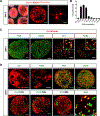
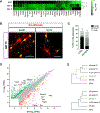
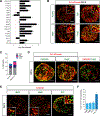
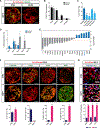
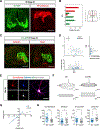


Comment in
-
Spinal Interneurons "à La Carte".Neuron. 2018 Oct 10;100(1):3-6. doi: 10.1016/j.neuron.2018.09.034. Neuron. 2018. PMID: 30308170
Similar articles
-
Notch1 signaling influences v2 interneuron and motor neuron development in the spinal cord.Dev Neurosci. 2006;28(1-2):102-17. doi: 10.1159/000090757. Dev Neurosci. 2006. PMID: 16508308
-
Renshaw cells and Ia inhibitory interneurons are generated at different times from p1 progenitors and differentiate shortly after exiting the cell cycle.J Neurosci. 2012 Jan 25;32(4):1156-70. doi: 10.1523/JNEUROSCI.3630-12.2012. J Neurosci. 2012. PMID: 22279202 Free PMC article.
-
Target selection of proprioceptive and motor axon synapses on neonatal V1-derived Ia inhibitory interneurons and Renshaw cells.J Comp Neurol. 2010 Dec 1;518(23):4675-701. doi: 10.1002/cne.22441. J Comp Neurol. 2010. PMID: 20963823 Free PMC article.
-
Programming embryonic stem cells to neuronal subtypes.Curr Opin Neurobiol. 2011 Feb;21(1):43-51. doi: 10.1016/j.conb.2010.09.012. Epub 2010 Oct 20. Curr Opin Neurobiol. 2011. PMID: 20970319 Free PMC article. Review.
-
Principles of interneuron development learned from Renshaw cells and the motoneuron recurrent inhibitory circuit.Ann N Y Acad Sci. 2013 Mar;1279:22-31. doi: 10.1111/nyas.12084. Ann N Y Acad Sci. 2013. PMID: 23530999 Free PMC article. Review.
Cited by
-
Transcriptional dynamics of murine motor neuron maturation in vivo and in vitro.Nat Commun. 2022 Sep 15;13(1):5427. doi: 10.1038/s41467-022-33022-4. Nat Commun. 2022. PMID: 36109497 Free PMC article.
-
Transplanting neural progenitor cells to restore connectivity after spinal cord injury.Nat Rev Neurosci. 2020 Jul;21(7):366-383. doi: 10.1038/s41583-020-0314-2. Epub 2020 Jun 9. Nat Rev Neurosci. 2020. PMID: 32518349 Free PMC article. Review.
-
A Stem Cell-Based Screening Platform Identifies Compounds that Desensitize Motor Neurons to Endoplasmic Reticulum Stress.Mol Ther. 2019 Jan 2;27(1):87-101. doi: 10.1016/j.ymthe.2018.10.010. Epub 2018 Oct 19. Mol Ther. 2019. PMID: 30446391 Free PMC article.
-
A shared transcriptional code orchestrates temporal patterning of the central nervous system.PLoS Biol. 2021 Nov 12;19(11):e3001450. doi: 10.1371/journal.pbio.3001450. eCollection 2021 Nov. PLoS Biol. 2021. PMID: 34767545 Free PMC article.
-
A transgenic mouse embryonic stem cell line for puromycin selection of V0V interneurons from heterogenous induced cultures.Stem Cell Res Ther. 2022 Mar 28;13(1):131. doi: 10.1186/s13287-022-02801-7. Stem Cell Res Ther. 2022. PMID: 35346349 Free PMC article.
References
-
- Abbondanzo SJ, Gadi I, and Stewart CL (1993). Derivation of embryonic stem cell lines. Methods Enzymol. 225, 803–823. - PubMed
-
- Albuquerque C, Joseph DJ, Choudhury P, and MacDermott AB (2009). Dissection, plating, and maintenance of cortical astrocyte cultures. Cold Spring Harb. Protoc. 2009, pdb.prot5273. - PubMed
Publication types
MeSH terms
Grants and funding
LinkOut - more resources
Full Text Sources
Molecular Biology Databases
Research Materials

